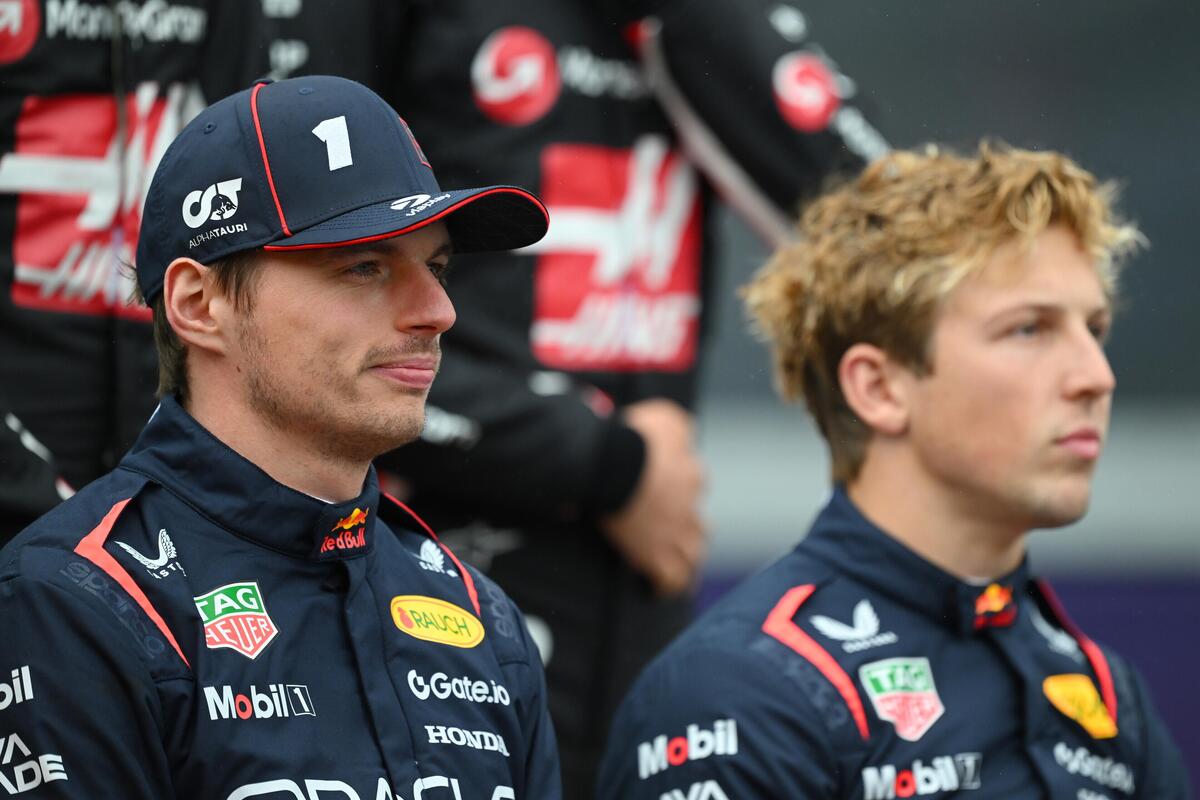In a dramatic turn of events, Red Bull Racing has reportedly decided to replace Liam Lawson with Yuki Tsunoda ahead of the Japanese Grand Prix. This decision, which has sparked significant controversy, raises questions about the team’s internal dynamics and the future of their driver lineup. As Max Verstappen expresses his dissatisfaction with the decision, the implications for Lawson and Tsunoda become increasingly complex.

The Controversy Surrounding the Swap
The news of Lawson’s removal has sent shockwaves through the Formula 1 community. Speculation about why Red Bull made this decision so abruptly has been rampant. Reports suggest that Honda, a key partner for Red Bull, is willing to pay a substantial sum—estimated at around $10 million—to have Tsunoda race at his home Grand Prix. This financial incentive adds another layer to the story, hinting at corporate pressures influencing driver choices.
Verstappen’s reaction to the swap has been particularly noteworthy. As a seasoned driver, he views the situation as a misstep by Red Bull, indicating that the team’s focus on driver performance rather than addressing car issues reflects poorly on their strategy. He believes that the car’s performance, not just the driver’s skill, is at fault for the team’s struggles this season.
Lawson’s Struggles and Critiques of Red Bull’s Decision-Making
Liam Lawson entered the Red Bull seat with minimal experience, having only completed a handful of races prior to his promotion. His early performances have not met the expectations set by the team, with his qualifying results consistently placing him at the back of the grid. Critics argue that the team’s decision to promote him was premature, and his abrupt removal might be seen as a failure on Red Bull’s part to nurture young talent properly.
The timing of the decision is particularly striking; Tsunoda is set to debut in a challenging Red Bull at a circuit where he has prior experience, yet Lawson is left without a fair chance to prove himself on a familiar track. The narrative suggests a lack of faith in Lawson’s abilities, contradicting earlier assertions by Red Bull that he was the better choice over Tsunoda.

Team Dynamics: The Power Struggle
The internal dynamics at Red Bull appear to be a significant factor in this decision. Reports indicate a possible power struggle between Helmut Marko and Christian Horner, with Marko being more favorable towards Tsunoda. This rivalry raises questions about the team’s long-term strategy and their commitment to developing young drivers.
Furthermore, Verstappen’s stance appears to be a direct critique of how Red Bull is managing its drivers. He has consistently defended his teammates in the past, but this time, he seems to be voicing concerns about the team’s handling of the situation. The implications of this could affect team morale and the overall atmosphere within the garage.
The High Stakes of the Japanese Grand Prix
With the Japanese Grand Prix fast approaching, the stakes are incredibly high for Tsunoda. He enters the race under immense pressure, needing to deliver results to justify Red Bull’s decision. A poor performance could further complicate his future with the team and potentially lead to a reassessment of his position.
For Lawson, the abrupt change leaves him in a precarious position as well. While some speculate that this decision could allow him to regroup and return stronger in the future, the fear of damaging his confidence looms large. The Red Bull philosophy of quick cuts and swaps has often led to young drivers feeling the pressure of high expectations without the necessary support.

The Bigger Picture: Red Bull’s Future
As Red Bull grapples with driver changes, the broader implications for the team’s future cannot be understated. If Tsunoda fails to perform, the team will need to reevaluate their approach to driver development and retention. The pressure on Tsunoda to deliver results at Suzuka is compounded by the fact that Red Bull’s partnership with Honda is coming to an end, raising questions about the team’s trajectory moving forward.
Verstappen’s comments highlight a significant concern for Red Bull: their car’s design may not be suited for anyone other than their star driver. This could pose a serious challenge for the team’s competitiveness in the future, especially when Verstappen ultimately decides to leave. The team’s reliance on a single driver’s talent to mask underlying issues could be a recipe for disaster.
Conclusion
The decision to swap Lawson for Tsunoda ahead of the Japanese Grand Prix reflects the complex interplay of corporate interests, driver performance, and team dynamics within Red Bull Racing. As the situation unfolds, all eyes will be on Tsunoda to see if he can seize this opportunity and prove himself worthy of the Red Bull seat. Meanwhile, Lawson’s future in Formula 1 hangs in the balance, illustrating the high-pressure environment that young drivers face in the sport. With Verstappen’s frustrations and internal power struggles adding to the mix, Red Bull’s path forward remains uncertain as they navigate the challenges of the current season.